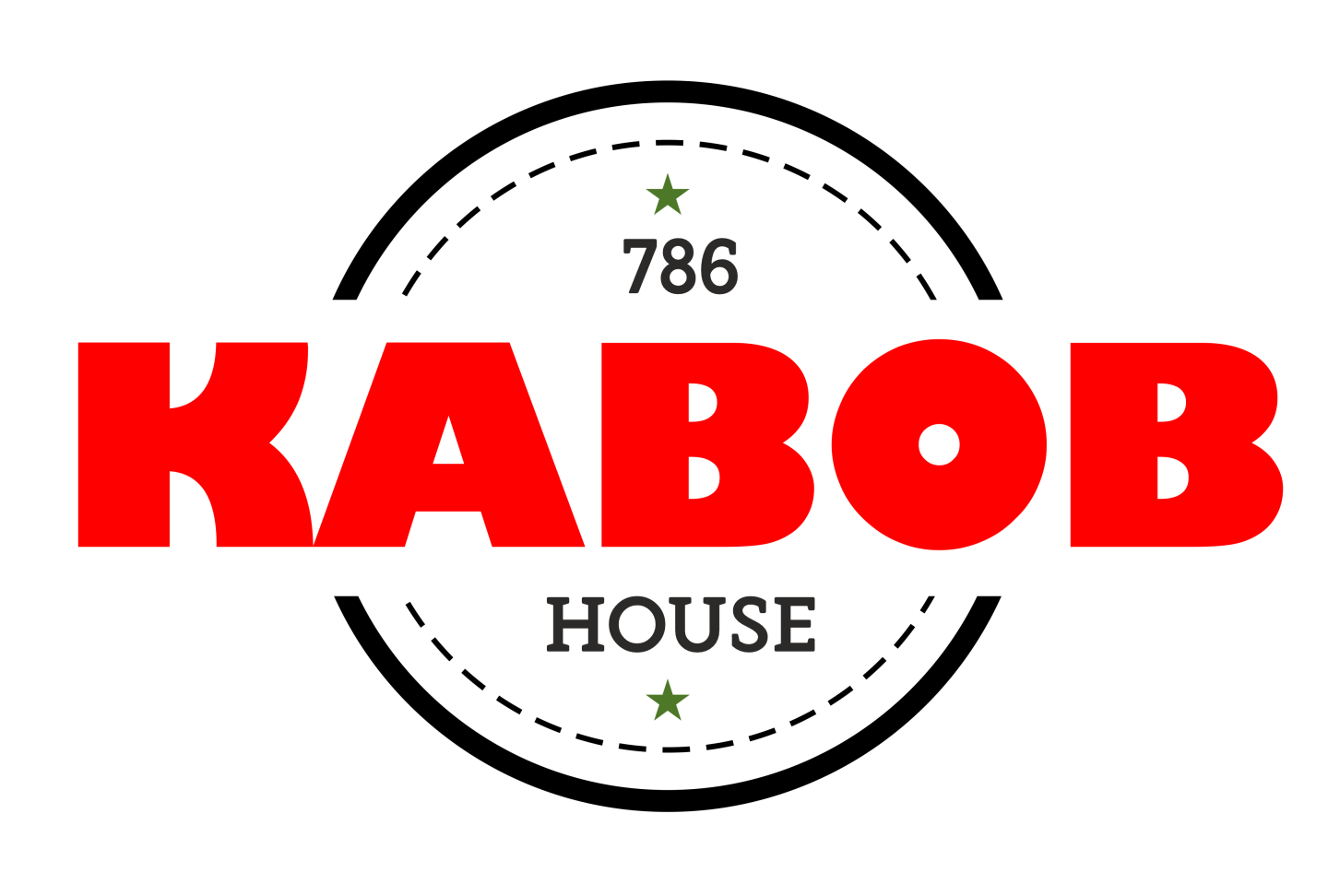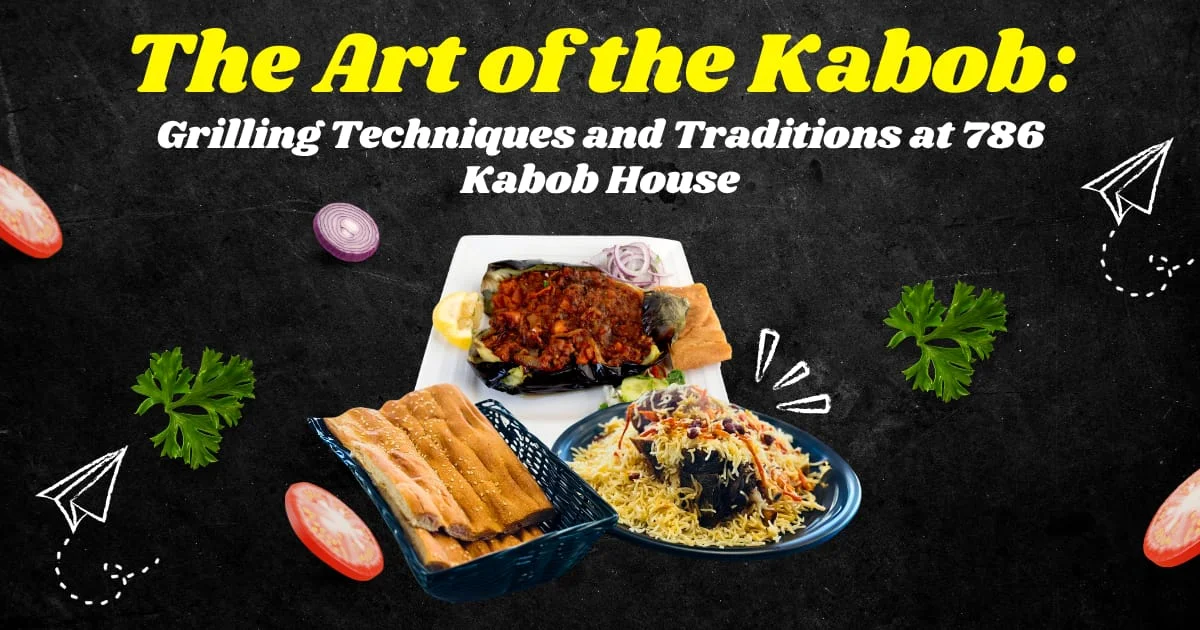Subtotal: $318.00
The Art of the Kabob: Grilling Techniques and Traditions at 786 Kabob House
Introduction: Where Fire Meets Flavor
Kabobs are not just food. They’re a celebration — of culture, of craftsmanship, and of connection. Nowhere is this more evident than at 786 Kabob House in Newark , California, where the grilling of kabobs is elevated to an art form. With precise marination techniques, carefully sourced halal meats, and grilling traditions rooted in centuries-old Afghan heritage, every skewer tells a story.
In this blog, we dive deep into the culinary secrets behind the delicious kabobs served at 786 Kabob House. We explore their grilling philosophy, preparation process, ingredient choices, and the cultural values that make these kabobs unforgettable.
What Makes a Kabob Truly Exceptional?
The word "kabob" might sound simple, but the preparation behind each variety involves layers of planning, flavor balancing, and grilling finesse. At 786 Kabob House, three core principles drive their kabob excellence:
- Marination Mastery
- Quality of Ingredients (Always Halal and Fresh)
- Precision Grilling Techniques
Each principle ensures not just consistency in taste, but also authenticity in every bite.
1. The Marination: A Science of Flavor
The magic of a great kabob begins hours — sometimes even a day — before it hits the grill. Marination is not just about soaking meat in spices. It’s a scientific, time-intensive process that allows ingredients to penetrate deep into the protein, tenderize it, and create rich, layered flavors.
a. Spice Blends: The Soul of the Flavor
At 786 Kabob House, traditional Afghan spice blends are used. These include:
- Coriander
- Cumin
- Turmeric
- Smoked Paprika
- Black Pepper
- Ginger and Garlic Paste
- Sumac (for tanginess in select kabobs)
- Crushed Pomegranate Seeds (used in Chaplee Kabobs)
These spices are freshly ground in-house, preserving their natural oils and aromas.
b. Natural Marinades
For chicken kabobs, yogurt-based marinades are used to break down the muscle fibers gently, keeping the meat tender while enhancing its juiciness. For beef and lamb, lemon juice, vinegar, or raw papaya (as a natural tenderizer) is used selectively.
The typical marination period ranges from 12 to 24 hours, depending on the meat.
2. Only the Best Ingredients: Always Halal, Always Fresh
786 Kabob House holds itself to a standard of integrity and purity, deeply rooted in Afghan culture and Islamic values. That means all meat used is certified halal, sourced from trusted suppliers who follow humane and religiously appropriate methods of slaughter.
a. Fresh, Never Frozen
Unlike many fast-casual restaurants, 786 Kabob House avoids using frozen meats. Fresh cuts of lamb, chicken, and beef are delivered multiple times a week and are prepped the same day they’re served.
This commitment ensures:
- Better texture
- Natural flavor retention
- Enhanced grilling response (fresh meat chars better and faster)
b. Vegetables and Garnishes
Afghan kabobs are often accompanied by grilled vegetables like tomatoes, bell peppers, and onions. These are also sourced locally and prepared daily.
3. The Grilling Technique: Tradition Meets Technique
Grilling is where the marinated meats transform into the smoky, tender, slightly charred delicacies that kabob lovers crave. At 786 Kabob House, grilling is more than a cooking method — it's a ritual.
a. The Charcoal Grill
The restaurant uses open charcoal grills, which mimic the traditional cooking method used in Afghanistan and the wider Central Asian region. Charcoal provides:
- Consistent high heat
- A natural smoky flavor
- Crisp outer texture with a juicy interior
b. Skewer Rotation and Timing
One of the secrets to 786 Kabob House's perfectly cooked kabobs is manual skewer rotation. Each skewer is turned at regular intervals to ensure even cooking. Timing is also crucial:
- Chicken Tikka: Grilled for 8–10 minutes
- Beef Seekh Kabob: 10–12 minutes
- Chaplee Kabob (Pan-Fried): About 5–7 minutes on each side
- Lamb Kabob: Slow-cooked for 12–15 minutes to lock in flavor
Experienced grill chefs monitor heat zones, move skewers from direct to indirect heat, and give each piece the exact attention it needs.
Signature Kabobs at 786 Kabob House
Chaplee Kabob
- Preparation: Ground beef mixed with spices, tomatoes, chilies, and onions.
- Grilling Style: Pan-fried rather than skewered.
- Distinct Feature: Flattened patty-style, crispy outside, juicy inside.
Chicken Tikka Kabob
- Preparation: Boneless chicken thigh marinated in a yogurt-spice blend.
- Grilling Style: Skewered and flame-grilled.
- Distinct Feature: Smoky exterior, zesty flavor, melt-in-mouth texture.
Beef Seekh Kabob
- Preparation: Ground beef, hand-blended spices, shaped around skewers.
- Grilling Style: Direct charcoal flame.
- Distinct Feature: Long, spiced rolls with bold heat and smoky aroma.
Lamb Kabob
- Preparation: Cubed lamb leg, marinated in saffron, lemon juice, and mild spices.
- Grilling Style: Slow flame-roasting over coals.
- Distinct Feature: Buttery tenderness and deep flavor from fat rendering.
Why Halal Matters: Cultural & Culinary Importance
In Afghan cooking, halal isn’t just a dietary restriction — it’s a value system that honors cleanliness, compassion, and quality. Choosing halal meat ensures:
- Ethical animal treatment
- No additives or harmful preservatives
- Cleaner, healthier meat that grills better and tastes more natural
The Garnishing Touch: Presentation with Purpose
Once the kabobs are grilled, the presentation adds the final flourish. Every plate is completed with:
- Freshly baked naan or saffron basmati rice
- Pickled onions and cucumbers
- Mint chutney or yogurt sauce
- Grilled tomato halves or bell peppers
Behind the Grill: The Chefs’ Philosophy
The grill masters at 786 Kabob House aren't just line cooks. They're artisans, trained in traditional Afghan cooking. Most of them hail from families where food is a generational craft — passed down through mothers, fathers, and grandparents.
Their cooking is guided by:
- Touch and feel: No digital thermometers, just years of experience.
- Smell and sound: Knowing the exact moment when kabobs need to be flipped by the aroma or the sizzle.
- Respect for ingredients: Letting each spice, cut of meat, or vegetable shine on its own.
Customer Favorites: Most Ordered Kabob Combos
- Chaplee Kabob + Chicken Tikka + Rice Combo
A balanced platter of spice, smoke, and comfort. - Lamb Kabob + Afghan Naan + Salad
For those who appreciate premium cuts and bold flavors. - Beef Seekh Kabob + Doogh + Firni
Spicy, creamy, and refreshing — a full-course flavor journey.
Cultural Connections: Kabobs as a Social Food
In Afghan culture, kabobs aren’t just a personal meal — they’re a social centerpiece. Family gatherings, weddings, and street-side meals all revolve around grilling.
Kabobs are about:
- Sharing
- Celebrating milestones
- Inviting strangers to your table
786 Kabob House carries this tradition forward by making every diner feel like part of the family.
Conclusion: Tradition You Can Taste
At 786 Kabob House, kabobs are more than grilled meat. They are a tribute to Afghan history, family tradition, and culinary expertise passed down through generations. Through the use of halal, fresh ingredients and authentic grilling techniques, each kabob delivers not only flavor — but story, soul, and connection.
So next time you’re in Newark and smell the alluring aroma of charcoal-grilled meat in the air, step into 786 Kabob House. Let your taste buds experience the centuries-old tradition of Afghan kabob-making, perfected for today’s California diners.
Visit 786 Kabob House:
Address: 39941 Balentine Dr, Newark, CA 94560
Phone: +1 (510) 771-9579
Website: www.786kabobhousenewark.com
Hours: Open Daily – Lunch & Dinner
 Daria Shevtsova
Daria Shevtsova Chicken Masala
Chicken Masala Sicilian Pizza
Sicilian Pizza Beef Masala
Beef Masala Martin Widenka
Martin Widenka
